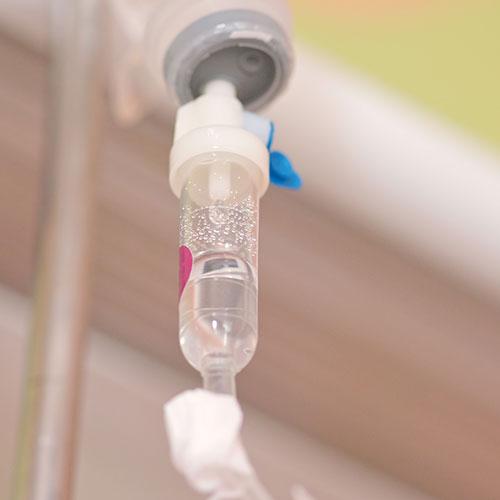According to Sue Niemeier, RN, the Chief Nursing Officer at Ivenix, “Nine out of 10 patients admitted to the hospital receive an infusion,” indicating how important infusion technology is in the healthcare industry and how high in demand it is, too.
DailyNurse.com published “The Quest to Reduce Infusion Errors,” outlining flaws in infusion technology that result in adverse reactions among patients, making infusion errors the primary safety hazard in health technology, prompting the FDA to issue new guidance for infusion pump manufacturers.
As per DailyNurse, the FDA cites the following as the most commonly reported errors in infusion technology:
- Human factors
- Broken components
- Battery failure
- Alarm failure
- Over/under infusion

Need an expert opinion on your pump? Contact AIV with your questions.

In the article, Niemeier illustrates how Ivenix uses simple software that mimics smartphone interface in its infusion technology to help reduce programming errors. Other improvements include an eight-hour battery life to keep treatments running over extended periods, as well as bag hooks built into the side of pumps to facilitate patient mobility.
"The Quest to Reduce Infusion Errors" highlights the importance of setting higher standards for manufacturers to solve common infusion errors, as well as outlining questions we should be asking about our existing or prospective infusion pumps. Whether you're purchasing a new or used infusion pump for your facility, ask the following essential questions to ensure your infusion technology is reliable and keeps your patients safe:
- Do nurses easily understand the user interface of the pump? Are there multiple buttons or other user interface elements that could potentially lead to an error?
- How easy is the administration set to load/unload in the pump, and is it possible to misload an administration set? A misloaded administration set has the potential to lead to free flow.
- What are the requirements for the pump to be set up to maintain accurate fluid delivery, and is this impacted by external factors (e.g. medication container height, viscous fluids, or back pressure)?
- What is the programming workflow for infusions that require multiple programming steps and may therefore be more prone to error? This includes: weight-based infusions; bolus dose infusions; secondary, or intermittent infusions; and multiple infusions given to the same patient.
- Does the pump have a drug library? If yes, does the interface automatically default to the drug library?
- What mechanisms are in place to help minimize common sources of alarms, such as air-in-line and occlusions alarms, that may disrupt or distress the patient’s environment?
- How easy is it to assess the status of a patient’s infusion without disrupting the patient, particularly during nighttime hours or when managing multiple patients who are on infusions?
- What mechanisms are in place to allow for ease of transport and/or patient ambulation?
- How easy is it to change drug libraries as a patient moves through different hospital care areas? Is it possible to change a drug library (or care profile) during an active infusion?
- Does the pump have the capability to communicate with the hospital’s EMR to support auto-programming and auto-documentation of infusions to reduce the number of manual steps required by nurses?
Looking for an expert opinion? Contact us with your questions!
About the Author

Laura Collier
Laura Collier has a Bachelor’s Degree in Communications and a Master’s Degree in Business Administration from the University of North Florida. She is the Marketing Manager at AIV, Inc.
